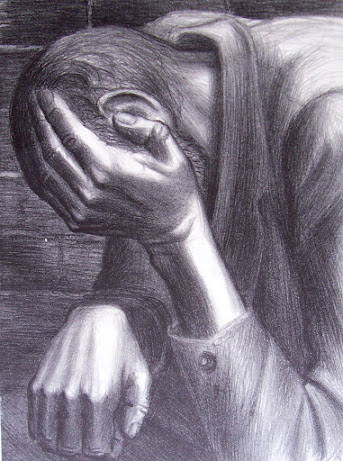Seventy years ago tomorrow, May 20, 1950, the New York Times
published a letter to Roland L. Redmond, President of the Metropolitan Museum
of Art. It protested the selection of the museum’s ‘American Painting Today --
1950’ exhibition and was signed by eighteen American painters, including William
Baziotes, as well as ten sculptors, including Peter Grippe.
 |
| William Baziotes, Clown and Clock, 1943-46 |
The group was critical of the makeup of the juries: Among
the jurists were Charles Burchfield, Yasuo Kuniyoshi and Millard Sheets. The
next day, May 21, a competing paper, The Herald Tribune, published an article, presumably
by their art critic Emily Genauer, defending the Museum and calling the
protestors ‘The Irascible 18.’
 |
| Peter Grippe, Daley Brothers' Moving, 1944 |
On July 3, 1950, seventy-five
artists issued a statement defending the museum. Among them were Will Barnet,
Philip Evergood, Reginald Marsh, and Harry Sternberg.
 |
| Detail of Nina Leen's photograph for Life Magazine, with identification. |
Generally now known as the
New York School, most of the protestors were photographed by Nina Leen for Life
Magazine’s January 15, 1951, issue. It was Barnett Newman (who also largely
composed the letter), who suggested that they should look like bankers.
TheIrascibles,
TheIrascible18, AmericanPaintingToday, WilliamBaziotes, PeterGrippe,
EmilyGenauer, WillBarnet, ReginaldMarsh, MillardSheets, HarrySternberg,
TheNewYorkTimes, NewYorkTimes, TheHeraldTribune, HeraldTribune, LifeMagazine,
MetropolitanMuseumofArt, MetropolitanMuseum, NinaLeen, NewYorkSchool
#TheIrascibles
#TheIrascible18 #AmericanPaintingToday #WilliamBaziotes #PeterGrippe
#EmilyGenauer #WillBarnet #ReginaldMarsh #MillardSheets #HarrySternberg
#TheNewYorkTimes #NewYorkTimes #TheHeraldTribune #HeraldTribune, #LifeMagazine,
#MetropolitanMuseumofArt #MetropolitanMuseum #NinaLeen #NewYorkSchool













